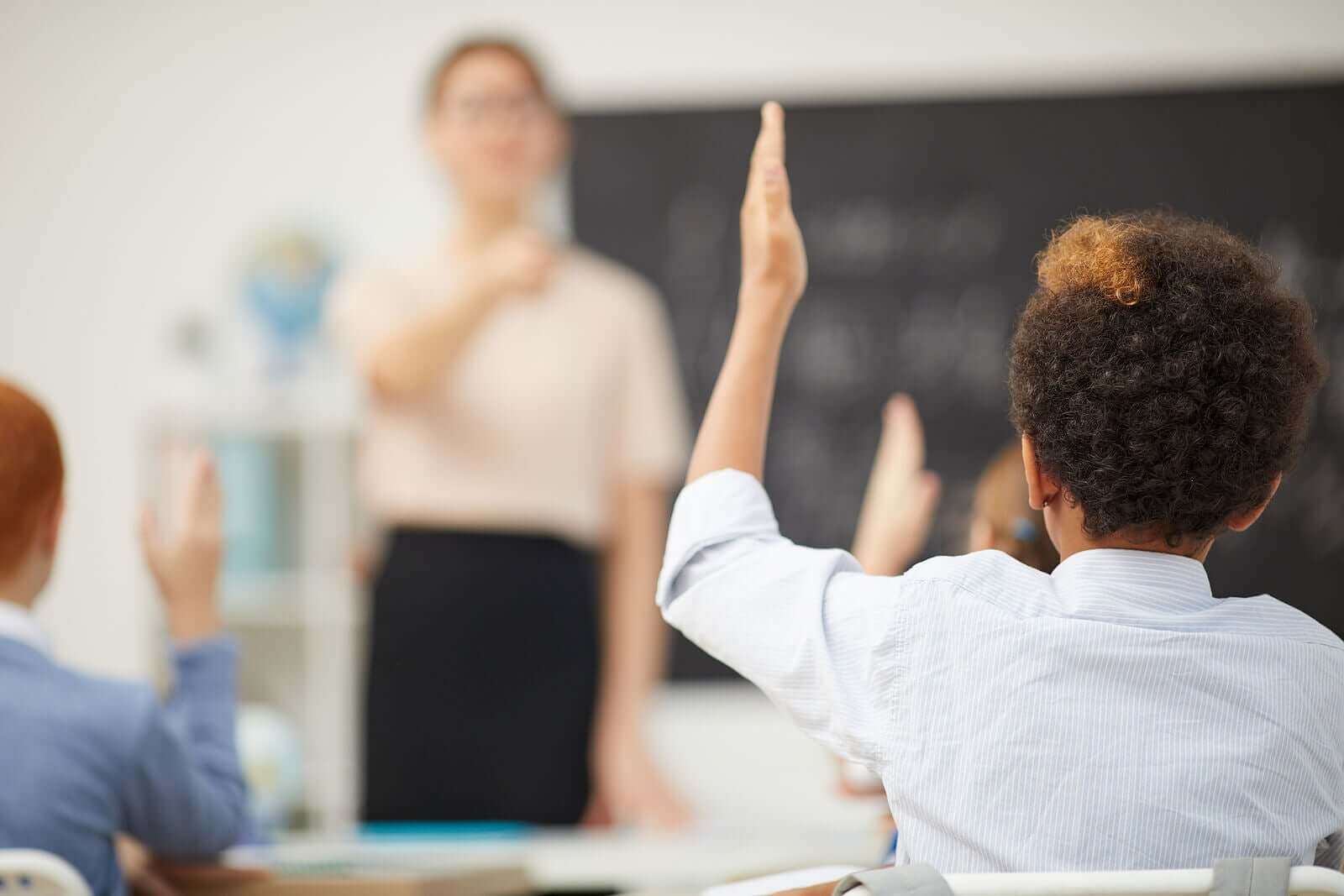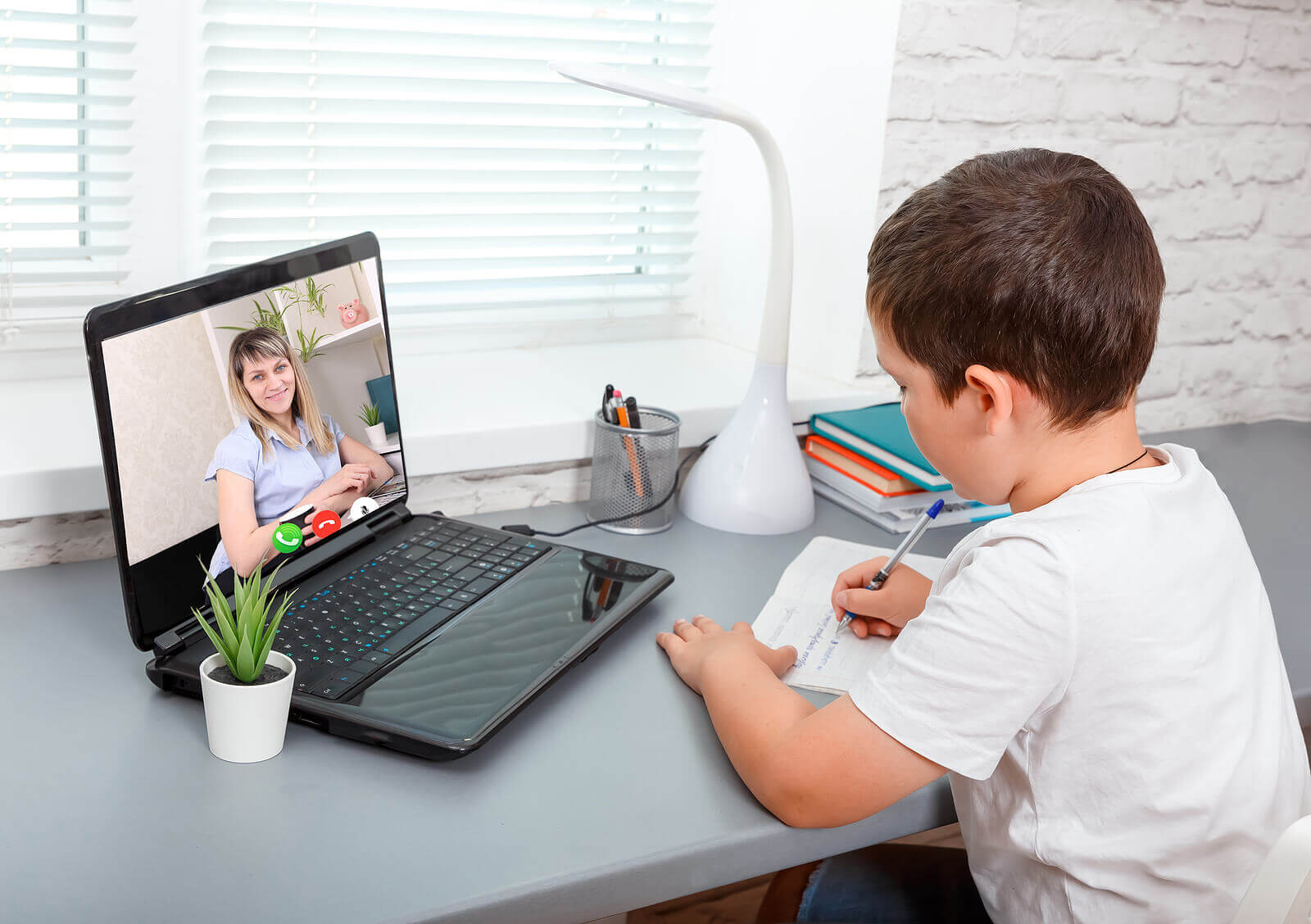Blended Learning: A Way of Learning That's Here to Stay

As a consequence of the world situation we’re currently experiencing, blended learning has intensified. However, this trend of combining face-to-face contact with virtual and remote education has actually been gaining popularity for several years. What’s more, it’s very possible that it could become the best means of education at all levels in the not-too-distant future.
What do we mean when we talk about blended learning?
When we talk about blended learning we’re talking about a term that refers to a form of teaching that combines two strategies.

On the one hand, it involves synchronous and face-to-face learning. And, on the other hand, asynchronous technology-based distance learning, either online or remote. Thus, the purpose of blended learning is to be able to combine the best of each of the two modalities that it brings together.
At present, there’s a tendency among schools to contemplate semi-online teaching. This involves organization logistics and a combination of human resources, materials, technology and infrastructure to create the so-called LMS, Learning Management System or “knowledge management systems.”
These management systems are web platforms that allow access to study courses that educational institutions design. Thus, well-structured blended learning can allow students to learn in a way that is personalized and that adapts to objectives and needs.
All this enables students to learn their subjects not only in the classroom in person but also outside. Therefore, students reinforce and review subject knowledge and also acquire new knowledge outside the classroom.
The advantages of this type of learning
- Offers students the possibility of accessing various training itineraries. And it makes teaching and learning more flexible and adaptable.
- Allows the elimination of spatial-temporal and displacement barriers. Students can learn and dispel their doubts immediately and quickly.
- Provides students with teaching support during face-to-face learning. Regarding the use of the different platforms and teaching websites, children will use them in other spaces and during times of distance learning.
- Allows for the possibility of developing participative and collaborative learning, both inside and outside the classroom. This is by means of different methodologies and applications that have this objective, such as the flipped classroom methodology.
- Enables a more dynamic and motivating, fluid and active education. It also allows for greater independence and autonomy in learning.
Regarding the teacher’s role, this is no longer the only source of knowledge. Rather, teachers serve as tutors and guides that accompany students in their learning processes.
Why is blended learning the future?
Constant change and progress characterize our society, and technology and the Internet are present in almost all social spheres. Therefore, education must follow along and respond to a society that demands the formation of citizens prepared to live in it.
Thus, blended learning seems to be a challenge and a useful training methodology. What’s more, it’s not only our educational systems that must adapt but also organizations and companies. All of these realms must get used to blended learning, both as a way of teaching and as a way of social communication, in general.

Some requirements to guarantee blended learning
In order to achieve quality education that’s available to all, blended learning should meet certain requirements. For example, teachers must structure, organize, and plan their teaching well in order to assure coherence between face-to-face and non-classroom learning. In doing so, they guarantee continuity in student learning.
In addition, achieving quality blended learning requires establishing a network for the training and education of teachers. That way, they can master with expertise the virtual environments of teaching-learning, as well as the pedagogical models that these environments involve.
Finally, as we’ve said, correct planning and good teacher training are necessary requirements for achieving quality blended learning. However, it’s important to note that there’s another indispensable requirement. Here, we’re referring to the inevitable economic investment that achieving this goal will require.
As a consequence of the world situation we’re currently experiencing, blended learning has intensified. However, this trend of combining face-to-face contact with virtual and remote education has actually been gaining popularity for several years. What’s more, it’s very possible that it could become the best means of education at all levels in the not-too-distant future.
What do we mean when we talk about blended learning?
When we talk about blended learning we’re talking about a term that refers to a form of teaching that combines two strategies.

On the one hand, it involves synchronous and face-to-face learning. And, on the other hand, asynchronous technology-based distance learning, either online or remote. Thus, the purpose of blended learning is to be able to combine the best of each of the two modalities that it brings together.
At present, there’s a tendency among schools to contemplate semi-online teaching. This involves organization logistics and a combination of human resources, materials, technology and infrastructure to create the so-called LMS, Learning Management System or “knowledge management systems.”
These management systems are web platforms that allow access to study courses that educational institutions design. Thus, well-structured blended learning can allow students to learn in a way that is personalized and that adapts to objectives and needs.
All this enables students to learn their subjects not only in the classroom in person but also outside. Therefore, students reinforce and review subject knowledge and also acquire new knowledge outside the classroom.
The advantages of this type of learning
- Offers students the possibility of accessing various training itineraries. And it makes teaching and learning more flexible and adaptable.
- Allows the elimination of spatial-temporal and displacement barriers. Students can learn and dispel their doubts immediately and quickly.
- Provides students with teaching support during face-to-face learning. Regarding the use of the different platforms and teaching websites, children will use them in other spaces and during times of distance learning.
- Allows for the possibility of developing participative and collaborative learning, both inside and outside the classroom. This is by means of different methodologies and applications that have this objective, such as the flipped classroom methodology.
- Enables a more dynamic and motivating, fluid and active education. It also allows for greater independence and autonomy in learning.
Regarding the teacher’s role, this is no longer the only source of knowledge. Rather, teachers serve as tutors and guides that accompany students in their learning processes.
Why is blended learning the future?
Constant change and progress characterize our society, and technology and the Internet are present in almost all social spheres. Therefore, education must follow along and respond to a society that demands the formation of citizens prepared to live in it.
Thus, blended learning seems to be a challenge and a useful training methodology. What’s more, it’s not only our educational systems that must adapt but also organizations and companies. All of these realms must get used to blended learning, both as a way of teaching and as a way of social communication, in general.

Some requirements to guarantee blended learning
In order to achieve quality education that’s available to all, blended learning should meet certain requirements. For example, teachers must structure, organize, and plan their teaching well in order to assure coherence between face-to-face and non-classroom learning. In doing so, they guarantee continuity in student learning.
In addition, achieving quality blended learning requires establishing a network for the training and education of teachers. That way, they can master with expertise the virtual environments of teaching-learning, as well as the pedagogical models that these environments involve.
Finally, as we’ve said, correct planning and good teacher training are necessary requirements for achieving quality blended learning. However, it’s important to note that there’s another indispensable requirement. Here, we’re referring to the inevitable economic investment that achieving this goal will require.
All cited sources were thoroughly reviewed by our team to ensure their quality, reliability, currency, and validity. The bibliography of this article was considered reliable and of academic or scientific accuracy.
- Bartolomé Pina, A. R. (2004). Blended learning. Conceptos básicos. Pixel-Bit: Revista de Medios y Educación, 23, pp. 7-20. Recuperado de https://idus.us.es/bitstream/handle/11441/55455/Blended%20learning.%20Conceptos%20b%c3%a1sicos.pdf?sequence=1&isAllowed=y
- Morán, L. (2012). Blended-learning. Desafío y oportunidad para la educación actual. EDUTEC. Revista Electrónica de Tecnología Educativa, (39), a188-a188. Recuperado de https://edutec.es/revista/index.php/edutec-e/article/view/371/108
- Clarenc, C. A. (2013). Análisis comparativo de LMS. Lulu. com. Recuperado de https://books.google.es/books?hl=es&lr=&id=agUtBgAAQBAJ&oi=fnd&pg=PA23&dq=LMS+entornos+virtuales&ots=jXZFSrkycY&sig=NSK_HdkbaAijTeOcOpBKLH863go#v=onepage&q=LMS%20entornos%20virtuales&f=false
This text is provided for informational purposes only and does not replace consultation with a professional. If in doubt, consult your specialist.








